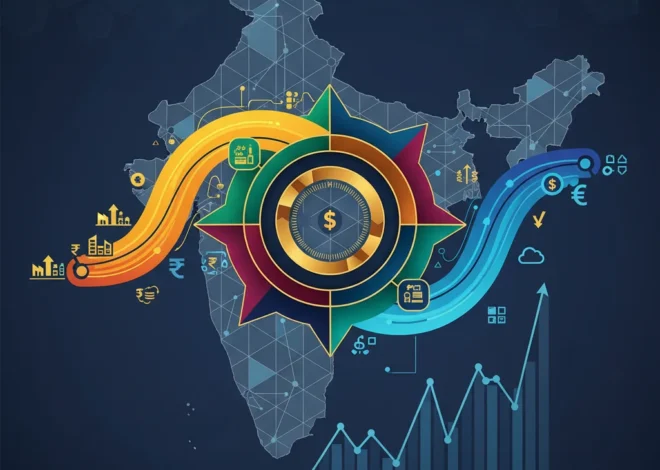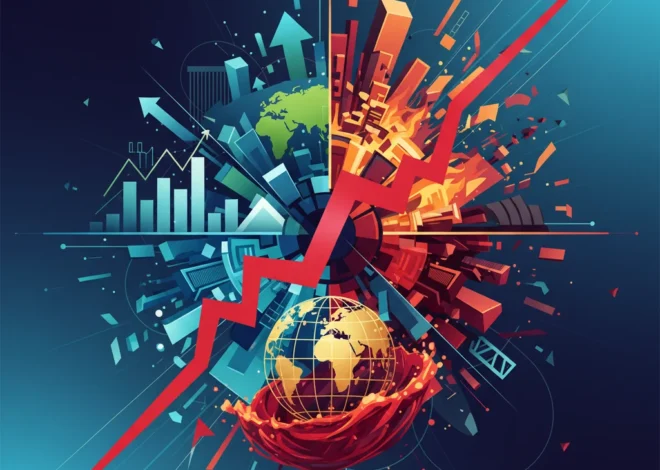
India’s Energy Paradox: Why Green Power Can’t Keep Pace with a Trillion-Dollar Economy
India is an economy in overdrive. As it surges towards becoming a global economic powerhouse, its appetite for energy is growing at an unprecedented rate. This explosive growth presents a monumental challenge, one that pits the nation’s developmental ambitions against its climate commitments. At the heart of this conundrum is a stark reality articulated by Sumant Sinha, founder of ReNew Energy and a leading voice in India’s clean energy sector: renewables, for all their progress, are struggling to keep up. This isn’t just an environmental issue; it’s a critical crossroads for global finance, investing, and the future of sustainable development.
For investors, business leaders, and anyone with an eye on the global economy, understanding India’s energy paradox is essential. The nation’s path forward will create immense investment opportunities, redefine energy markets, and significantly impact the worldwide fight against climate change. The question is no longer *if* India will transition to clean energy, but *how* it can manage a transition that is both rapid enough to be meaningful and stable enough to power a billion-plus people’s aspirations.
The Unstoppable Force: Decoding India’s Power Surge
To grasp the scale of the challenge, one must first appreciate the sheer velocity of India’s energy demand. This isn’t a gentle, linear increase; it’s an exponential surge driven by a confluence of powerful economic and social forces. Urbanization is drawing millions to cities, industrial manufacturing is expanding under the “Make in India” initiative, and a burgeoning middle class is rapidly adopting modern conveniences like air conditioning and electric vehicles.
The numbers are staggering. India’s peak power demand recently hit a record 240 gigawatts (GW), a figure that is expected to climb relentlessly. According to Sumant Sinha, the country will need to add approximately 40-50 GW of new capacity *every year* to keep the lights on and the economic engines running. To put that in perspective, 50 GW is more than the entire installed capacity of a country like Spain. This relentless demand growth forms the bedrock of India’s energy policy and is a critical factor for anyone analyzing the country’s stock market and long-term economic stability.
This insatiable demand creates a pragmatic dilemma. While India has made heroic strides in renewable energy, particularly solar, the immediate need for reliable, 24/7 “baseload” power often leads back to a familiar, if controversial, source: coal. For the Indian government, ensuring energy security and affordability is paramount to maintaining economic momentum and social stability. This difficult balancing act is where the simple narrative of “renewables good, coal bad” begins to break down.
Echoes of 1929: Is Today's Tech Boom a Modern-Day Tale of "Shiny Toy Hubris"?
Green Ambitions Meet Grid Realities
India’s commitment to renewable energy is not in doubt. The country has set an ambitious target of reaching 500 GW of non-fossil fuel capacity by 2030. Companies like ReNew Energy are at the forefront, deploying vast solar and wind farms. However, the fundamental nature of these sources—intermittency—poses a significant challenge to grid stability.
The sun doesn’t shine at night, and the wind doesn’t always blow when demand peaks. This variability means that for every gigawatt of renewable energy added, the grid requires a backup or balancing solution to ensure a consistent power supply. As Sinha points out, the current pace of adding 15-20 GW of renewable capacity annually is simply insufficient to meet the 40-50 GW of new demand. The gap, for now, is being filled by coal, which still accounts for roughly three-quarters of India’s electricity generation.
This continued reliance on coal is a source of tension for international observers and climate-focused investors. Yet, from a domestic economics perspective, it’s a pragmatic choice to prevent power outages that could cripple industries and derail growth. The challenge, therefore, is not just about adding more solar panels; it’s about re-engineering the entire energy ecosystem to accommodate them.
The Trillion-Dollar Blueprint: Financing India’s Transition
The scale of the required transformation is matched only by the scale of the investment needed. Transitioning India’s energy grid is a multi-trillion-dollar undertaking that requires a sophisticated approach to finance and a robust banking sector. This is where the worlds of energy, economics, and financial technology converge.
Attracting this level of capital requires a stable policy environment, clear long-term signals from the government, and innovative financial instruments. Green bonds, blended finance structures, and public-private partnerships are all part of the solution. International investors are eager to participate, but they need assurance that projects are viable and that the regulatory landscape is predictable. The economics of renewable projects are becoming increasingly favorable, but the supporting infrastructure—transmission lines, storage solutions—still requires massive upfront investment.
Below is a simplified look at the key components of India’s energy investment landscape:
| Investment Area | Key Challenge | Potential Role of Financial Innovation |
|---|---|---|
| Renewable Generation (Solar/Wind) | Land acquisition, supply chain volatility, intermittency. | Asset-backed securities, yieldco structures to attract long-term capital. |
| Energy Storage (Batteries) | High upfront cost, technology risk, lack of long-term revenue certainty. | Government-backed viability gap funding, innovative offtake agreements. |
| Grid Modernization | Massive capital expenditure, complex integration of old and new assets. | Infrastructure investment trusts (InvITs), leveraging fintech for efficient project management. |
| Green Hydrogen | High production cost, nascent market, infrastructure needs. | Venture capital, public funding for R&D, and potentially blockchain for supply chain transparency. |
Innovations in financial technology (fintech) could play a transformative role. Blockchain, for instance, could be used to create transparent and traceable carbon credit trading platforms, while AI-driven fintech solutions can help optimize project financing and manage investment risk more effectively. This technological layer is crucial for building investor confidence and accelerating capital flow.
The £150 Billion Problem: How Britain's Health Crisis is Quietly Crippling its Economy
Beyond the Dilemma: The Path to Round-the-Clock Clean Power
The long-term solution to India’s energy paradox lies in technologies that can provide firm, dispatchable power from clean sources. This is the holy grail: “round-the-clock” (RTC) renewable energy. Sinha and other industry leaders are now focusing on hybrid models that combine wind, solar, and, crucially, energy storage.
Grid-scale battery storage is the most immediate and viable solution. As battery costs continue to fall, they become an increasingly attractive way to store excess solar energy generated during the day and release it during the evening peak. This technology directly addresses the intermittency problem and is the key to unlocking the full potential of India’s renewable resources.
Looking further ahead, green hydrogen presents another promising avenue. Produced using renewable electricity to split water, green hydrogen can be stored for long periods and used to power hard-to-abate sectors like heavy industry and long-haul transport. While the economics are still challenging, India’s low-cost solar power gives it a potential long-term competitive advantage in this nascent global market.
These next-generation solutions are where the most exciting investment opportunities lie. They represent a shift from simply generating green electrons to building a resilient, flexible, and fully decarbonized energy system. Success will require not just technological breakthroughs but also policy support, international collaboration, and a massive mobilization of private finance.
Beyond the 2008 Ghost: Why Europe's Securitisation Market Deserves a Second Look
A Global Challenge, A Historic Opportunity
India’s energy journey is more than a national story; it’s a barometer for the world’s ability to tackle climate change while fostering economic growth. The country cannot be expected to sacrifice its development at the altar of global climate goals. Instead, the global community, particularly the world of international finance, must see India not as a problem to be solved but as the single greatest investment opportunity in the clean energy transition.
The pragmatic realism of leaders like Sumant Sinha is not a sign of wavering commitment but a clear-eyed assessment of the monumental task ahead. The path forward is not a straight line but a complex negotiation between growth and sustainability, pragmatism and ambition. For investors, policymakers, and business leaders, the message is clear: India’s energy transition will be one of the defining economic narratives of the 21st century. Navigating its complexities will require capital, innovation, and a deep understanding of the delicate balance required to power a rising superpower.


